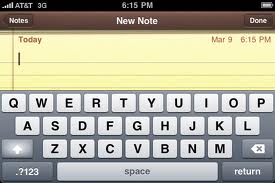Will touchscreens finally kill the QWERTY layout?

Lately, the momentum towards touchscreens and smartphones as primary computing devices has been overwhelming. As a result, there are fewer and fewer roles for the physical keyboard, though it's likely to remain in parts of our workplaces for some time to come.

That's the prediction of Bill Mark, head of information and computing sciences at SRI, quoted by PCWorld's Mark Hachman. Speaking at a recent confab sponsored by SRI, Mark observed that "there are some situations where the keyboard is just the right thing."
As the world moves to touchscreens -- keyboards that are virtual, and defined by software -- will there be a shift away from the traditional QWERTY key layout as well? Often, physical keyboards themselves are referred to as QWERTY keyboards, but the QWERTY format is also replicated onto touchscreens and smartphones as well.
QWERTY is a prime example of a process baked in so deeply into users' psyches that decades of advances in technology have to been unable to change. It was designed on the first mechanical typewriters of the 1800s to keep the most commonly used keys at a safe distance from each other, so they wouldn't crash into each other and jam the machines. Typewriters improved since then, and in recent decades, major operating systems such as Windows supported non-QWERTY key layouts for some time now. But QWERTY survived all these threats to its existence.
With software running the show, the door is wide open to new, potentially more productive layouts -- such as that proposed last spring by researchers from Montana Tech, St. Andrews, and the Max Planck Institute for Informatics. Their KALQ keyboard layout, which is based on thumb typing, ostensibly speeds up typing by as much as 34%, it is claimed. The KALQ layout is currently available as an Android app.
Perhaps the rise of touchscreen keyboards also finally clears the way for the Dvorak Simplified Keyboard, first developed in 1936 by Dr. August Dvorak and his brother-in-law Dr. William Dealey. The Dvorak keyboard is designed to be more efficient than the QWERTY layout, with more common letter combinations.
This post was originally published on Smartplanet.com